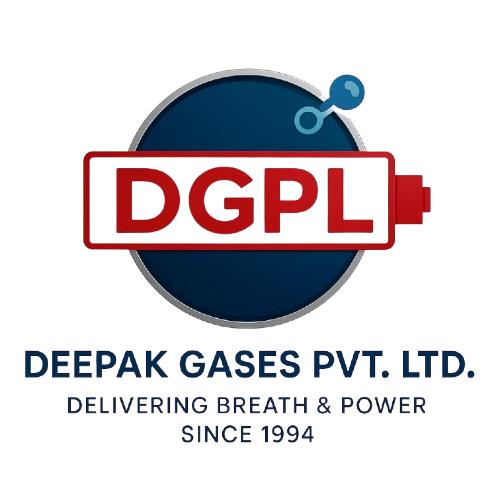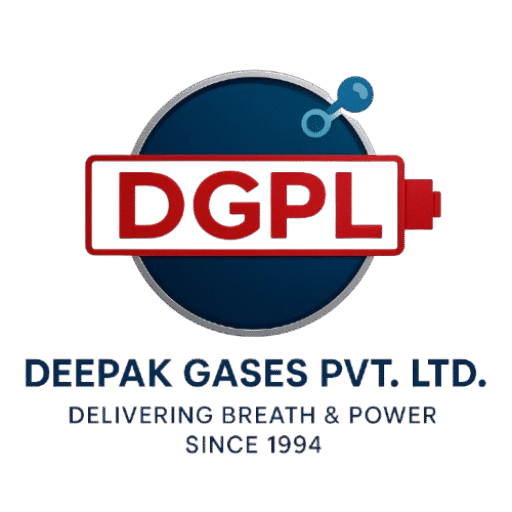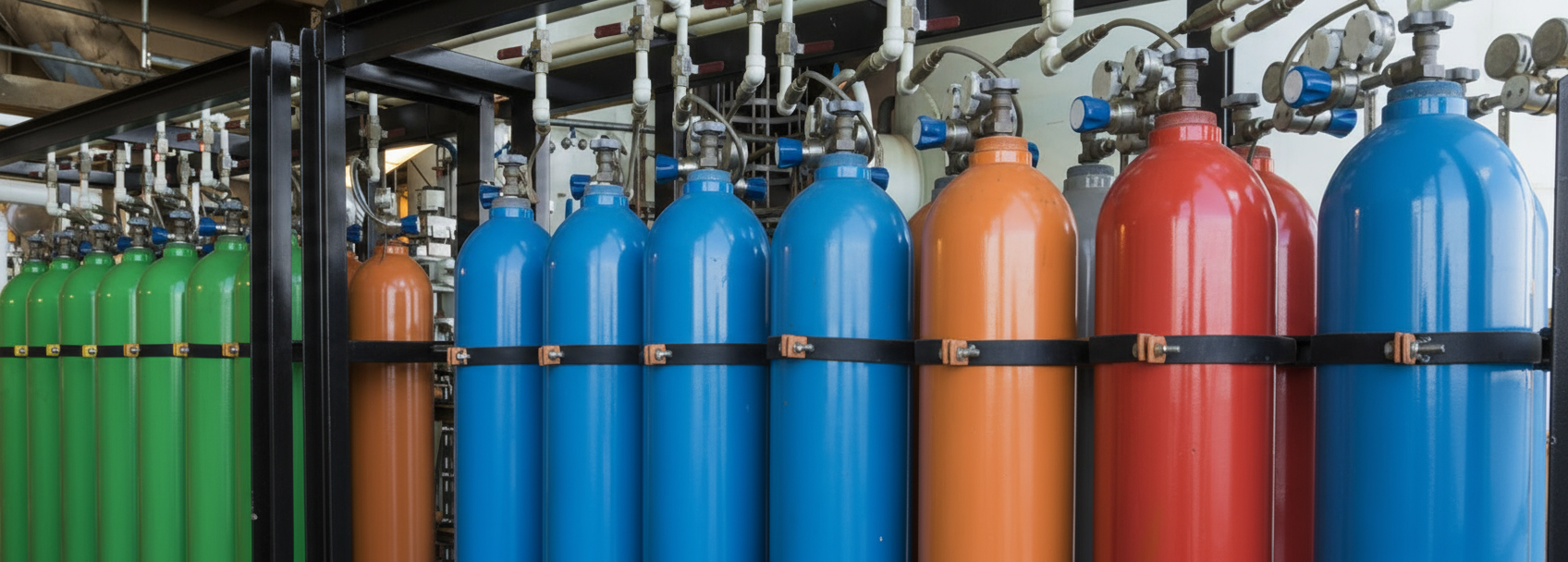
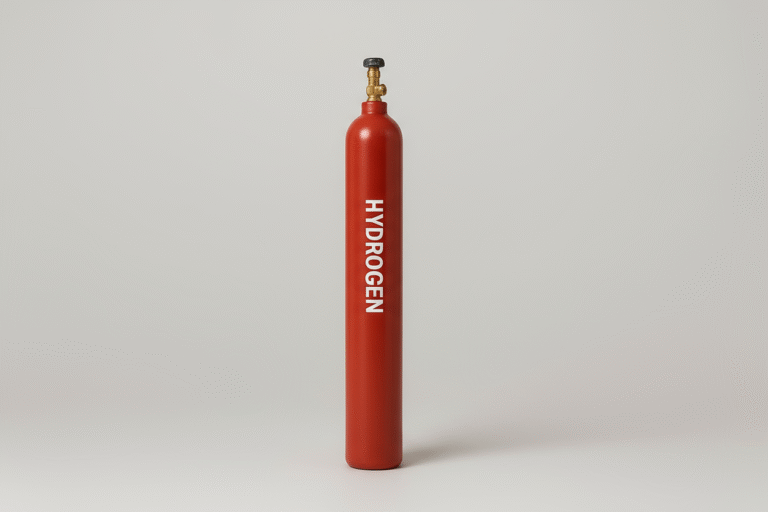
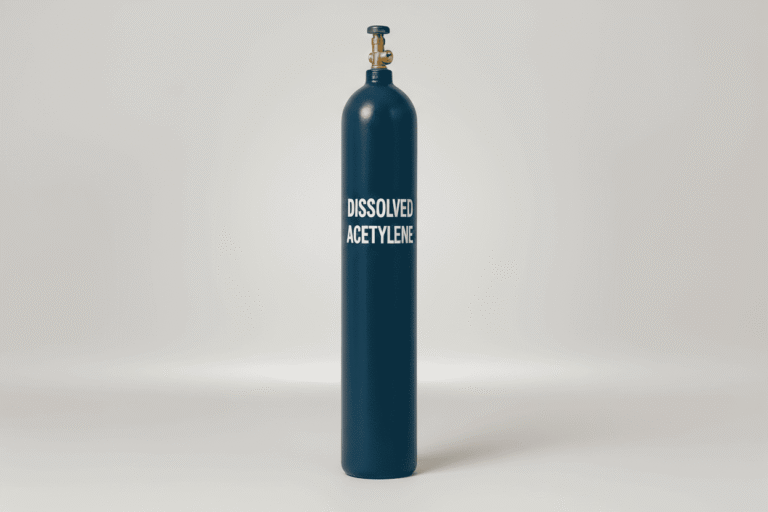
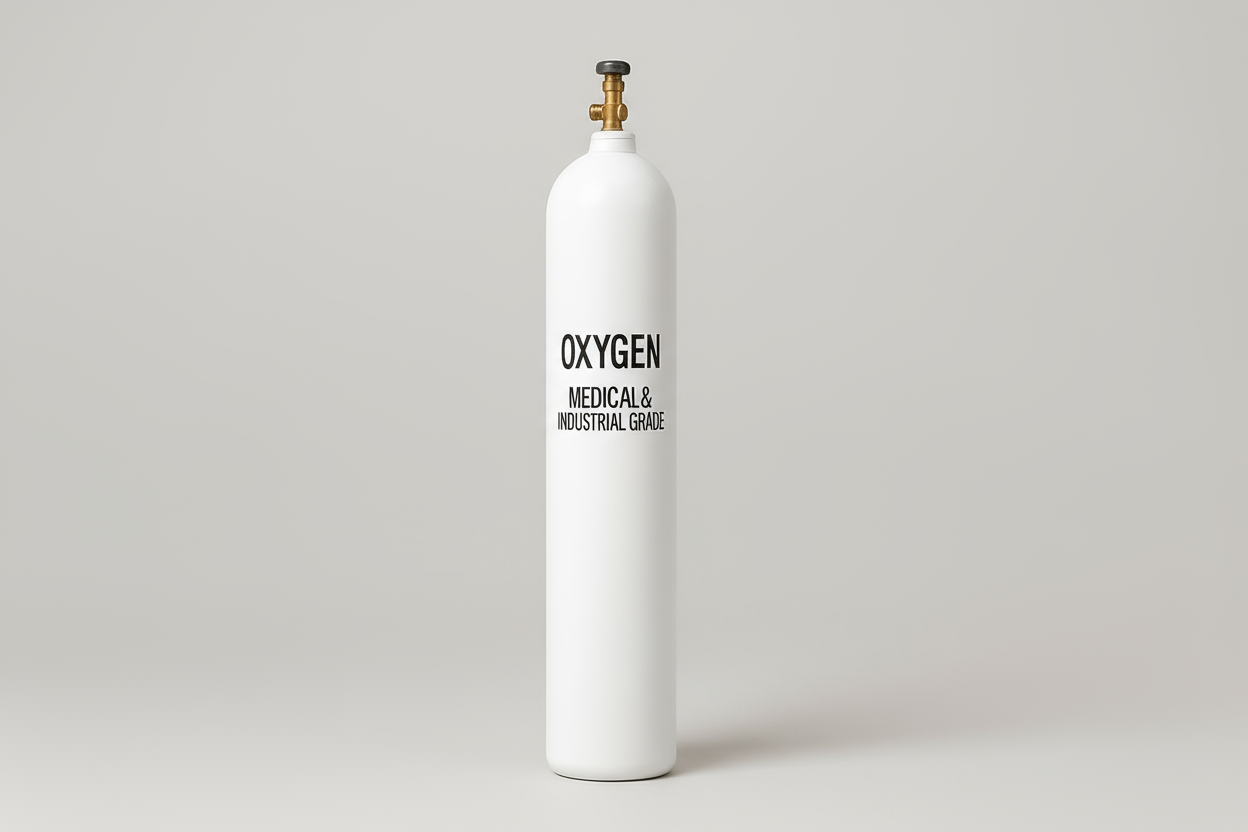
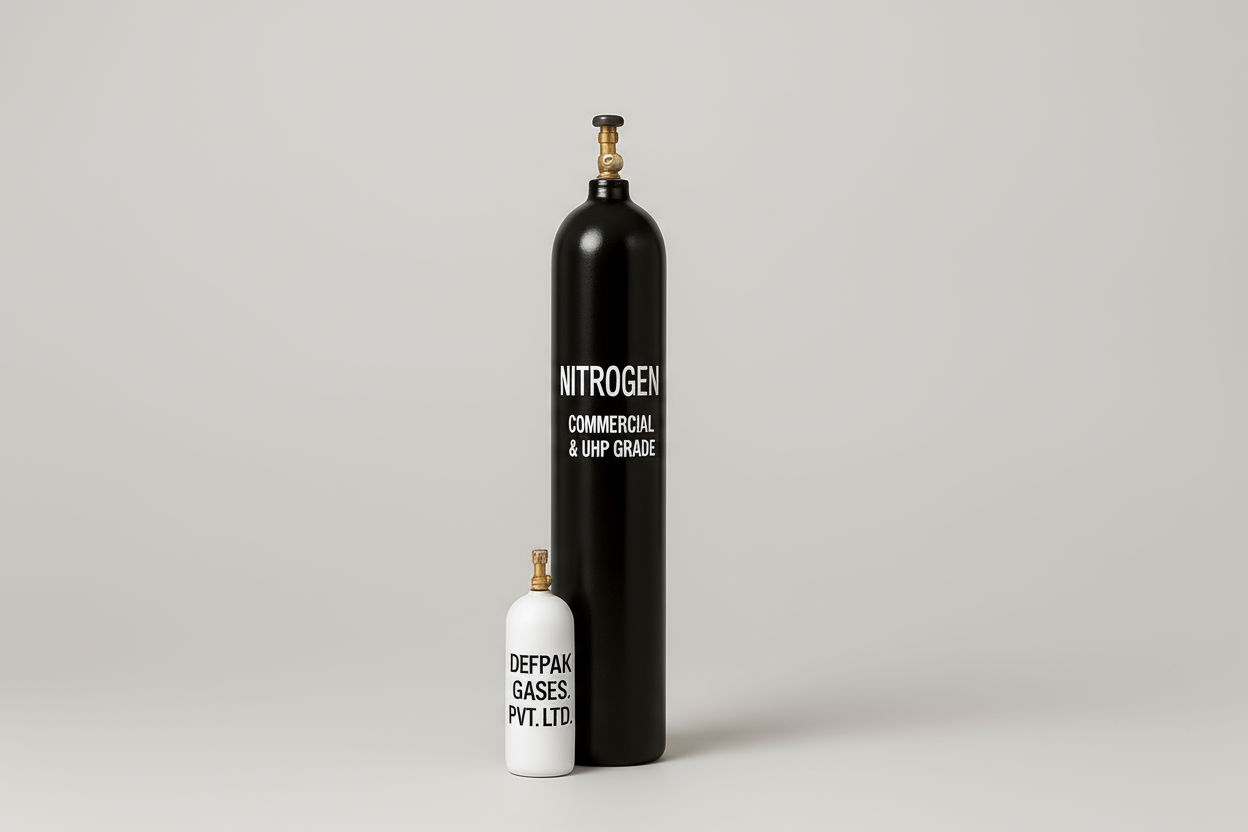
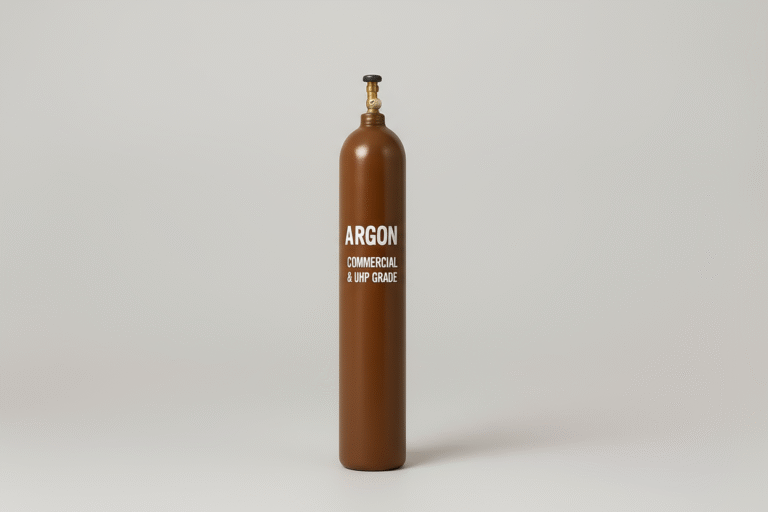
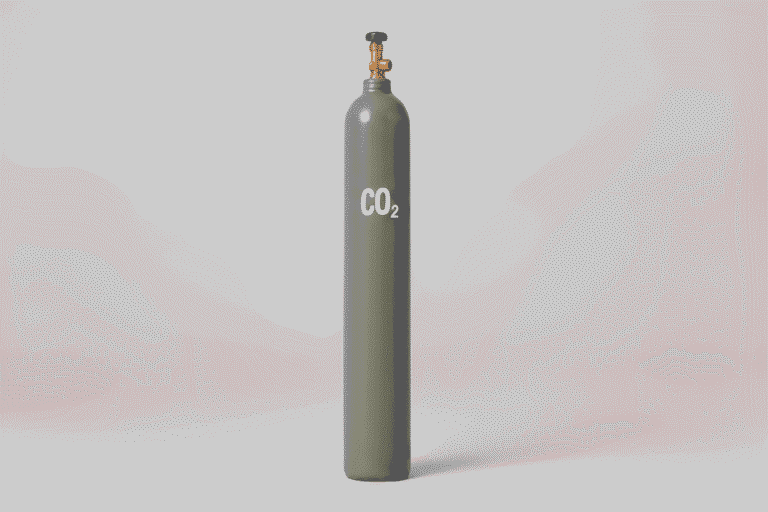
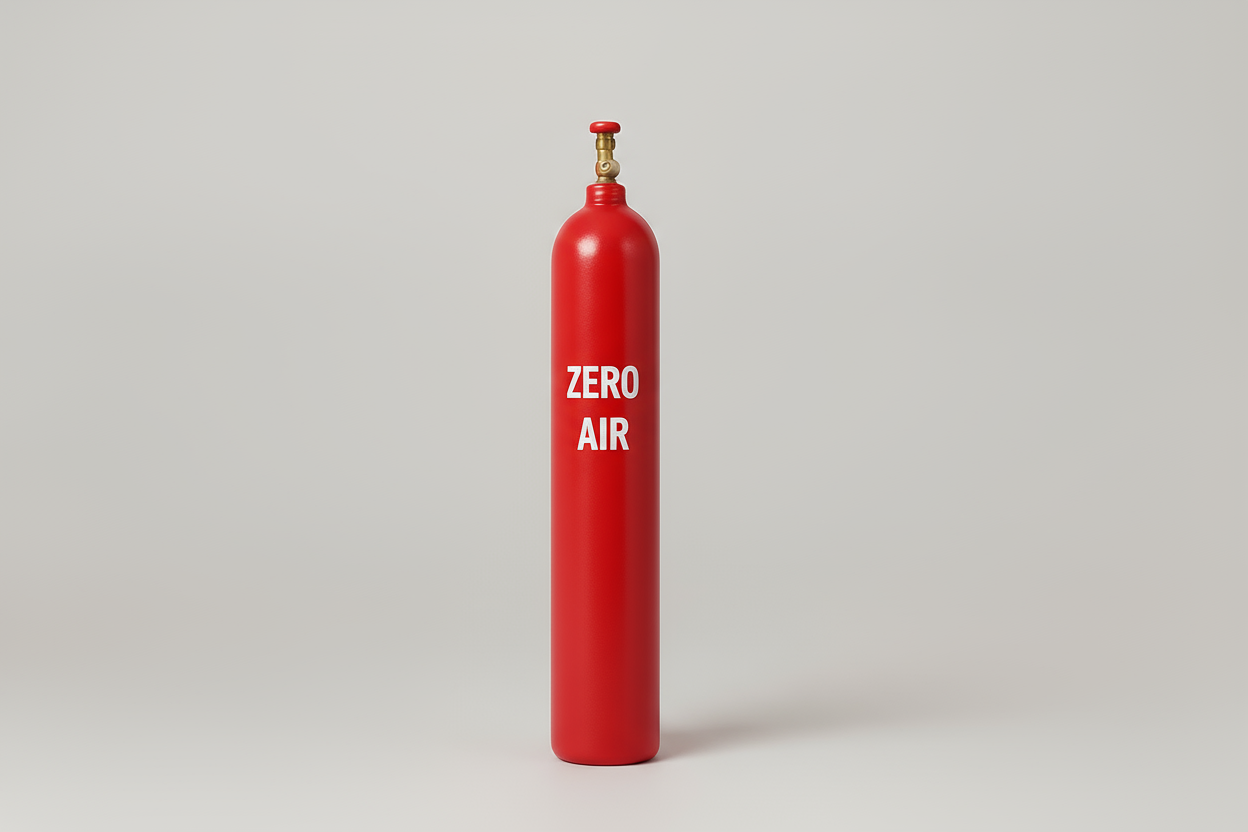
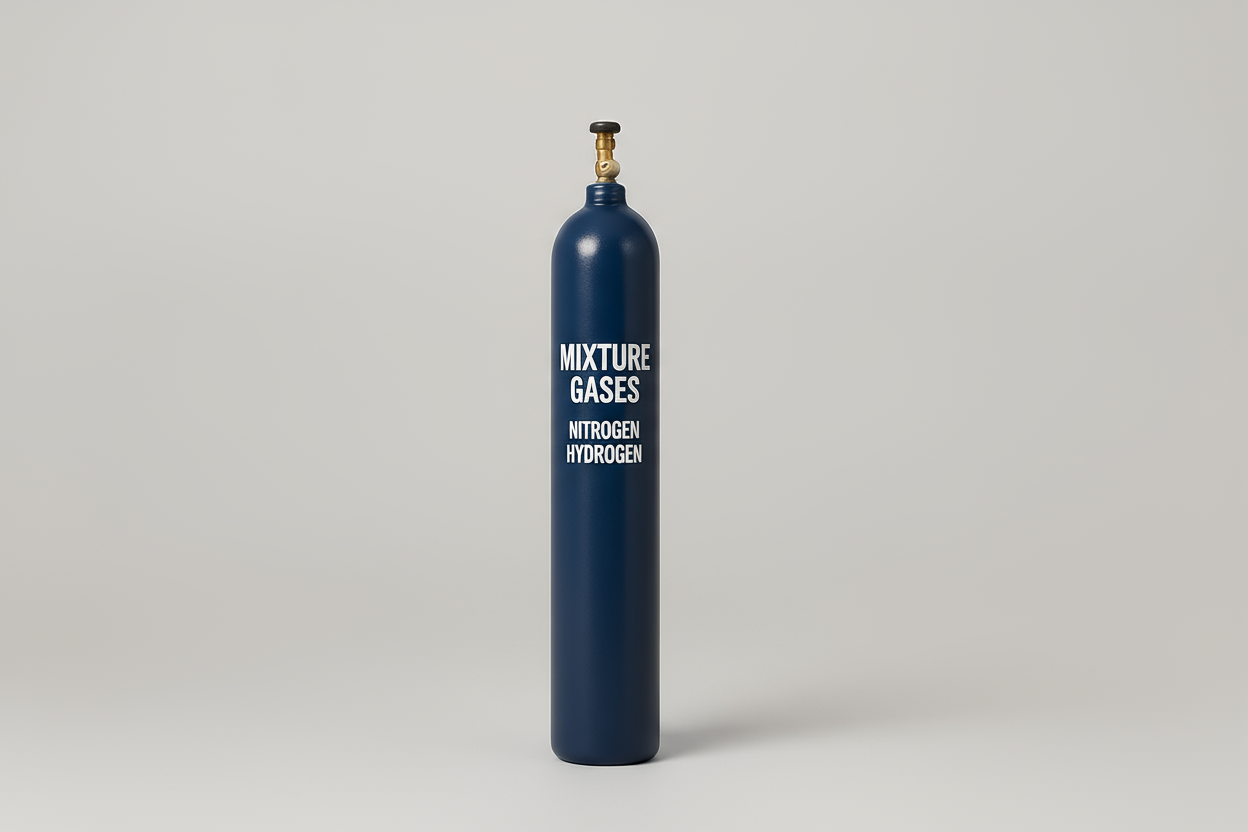
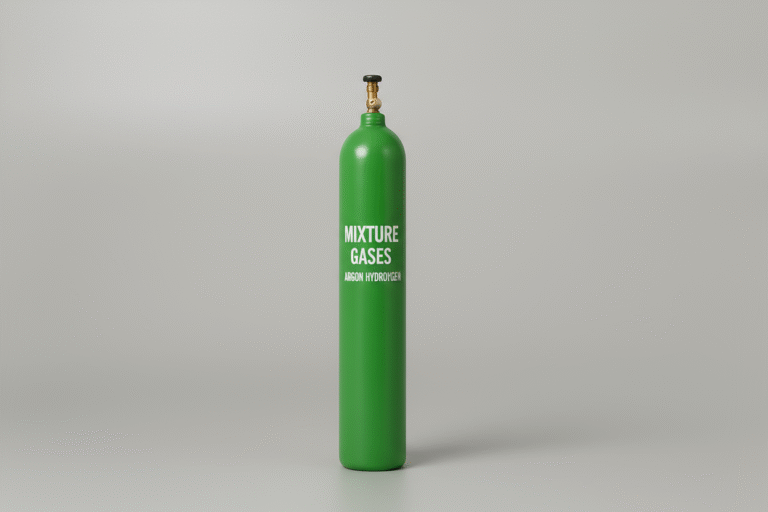
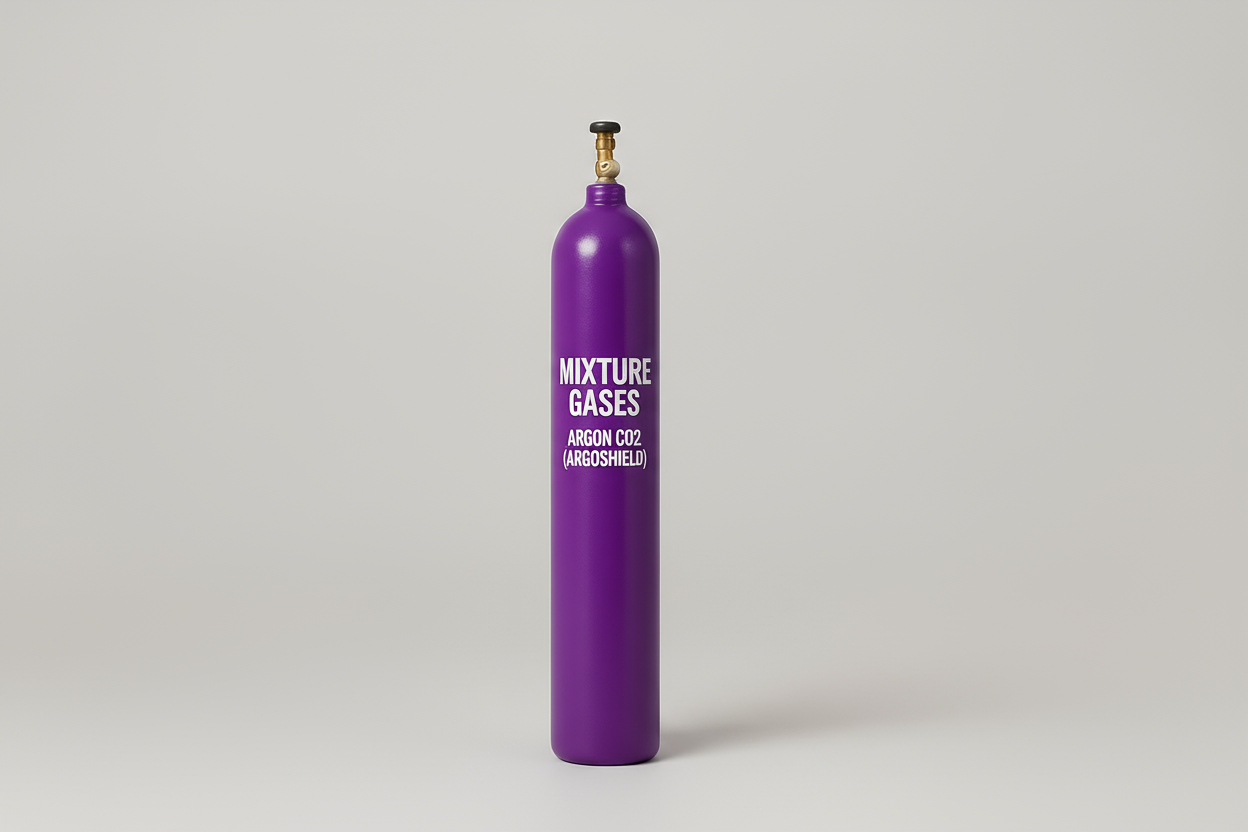
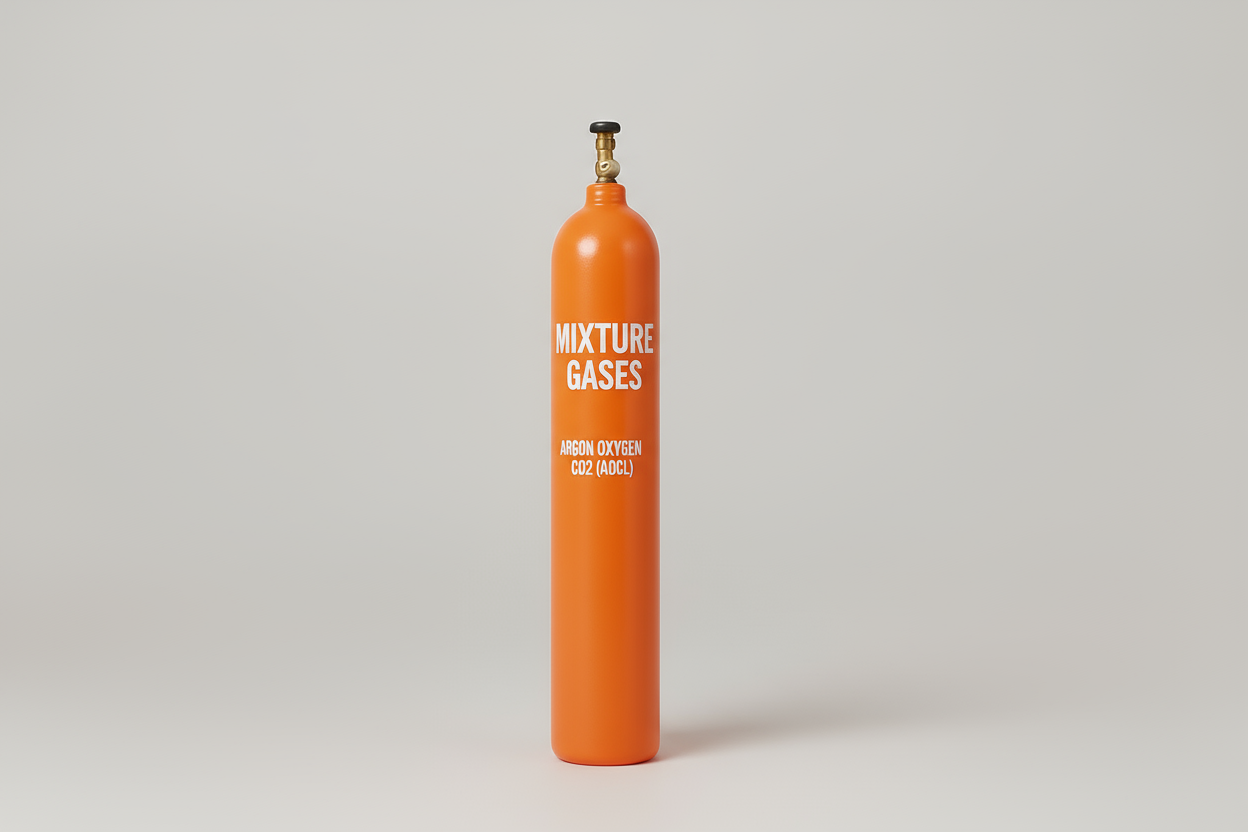
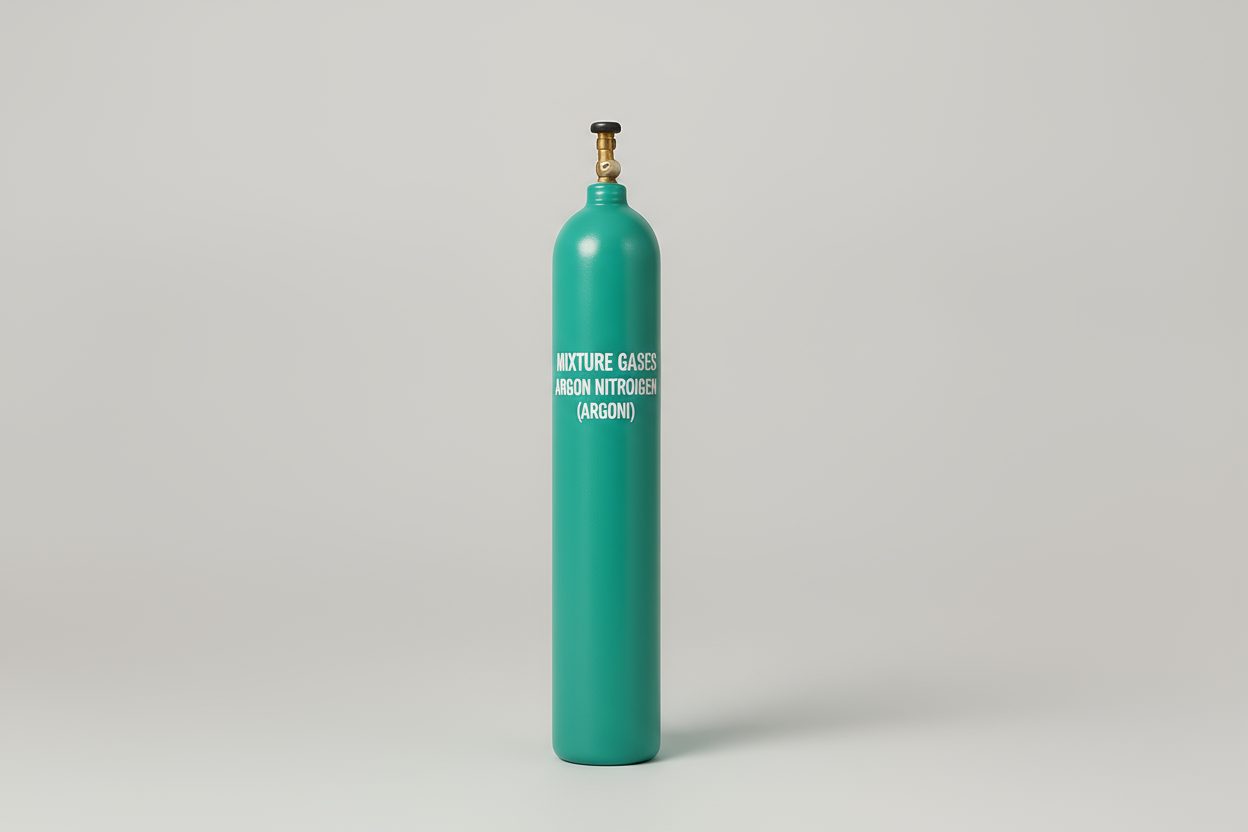
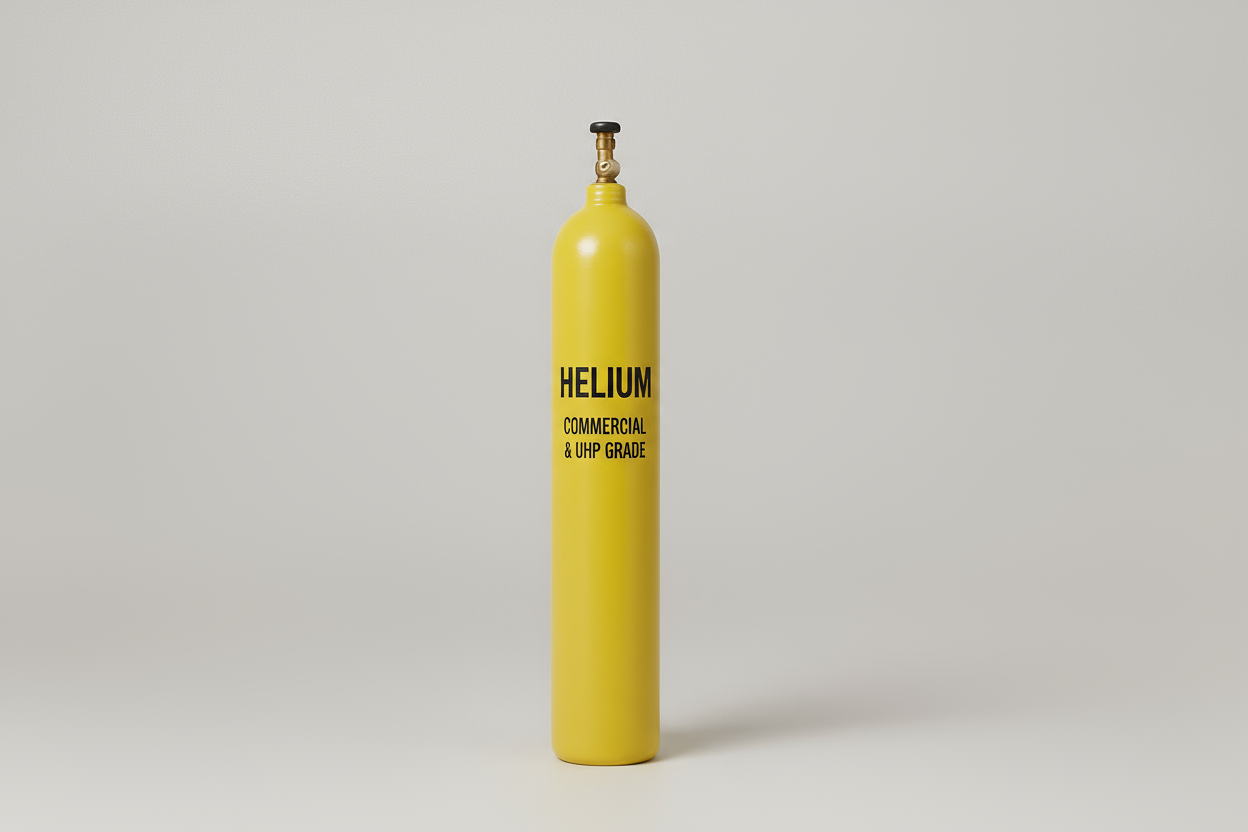
HYDROGEN ( COMMERCIAL & UHP GRADE)
Hydrogen is a colorless, odorless, and highly flammable gas that plays a vital role as both an energy carrier and an industrial raw material. In its commercial grade, it is widely used as a reducing agent in metallurgy, for hydrogenation of oils and fats in the food industry, and as a clean-burning fuel in various applications. With growing emphasis on sustainable energy, hydrogen is increasingly being explored for power generation and storage in the hydrogen economy. Its ultra-high purity (UHP) grade is indispensable in precision sectors such as semiconductor manufacturing, specialty laboratories, and electronics, where even trace impurities can affect outcomes. Due to its versatility, hydrogen is regarded as one of the most future-oriented gases across industries ranging from chemicals to renewable energy.
DISSOLVED ACYTYLENE
Dissolved Acetylene, stabilized in acetone for safe storage and transport, is the hottest burning fuel gas, making it a cornerstone of metal fabrication industries. It is most commonly used in oxy-acetylene welding and cutting, where its intense flame allows for efficient joining, cutting, and shaping of metals. Beyond fabrication, it finds applications in flame cleaning, heating, and brazing processes that require high precision and reliability. In the chemical sector, acetylene is also an important feedstock for synthesizing compounds such as acetaldehyde and acetic acid. Its adaptability to diverse industrial needs makes it one of the most relied-upon gases for heavy-duty applications.
OXYGEN (MEDICAL & INDUSTRIAL GRADE)
Oxygen is one of the most critical gases for both human life and industrial operations. Medical-grade oxygen is extensively used in hospitals and clinics for life support systems, oxygen therapy, and ventilators, ensuring that patients receive adequate respiratory care in emergencies and treatments. Industrial-grade oxygen, on the other hand, is vital for enhancing combustion processes in steelmaking, glass production, and chemical processing, where high heat and energy efficiency are crucial. It also serves an important role in cutting and welding applications, providing the oxidizing environment necessary for strong and clean results. With its dual role in saving lives and powering industries, oxygen remains indispensable across healthcare and manufacturing sectors.
NITROGEN (COMMERCIAL & UHP GRADE)
Nitrogen, an inert and non-reactive gas, is one of the most widely used industrial gases due to its stability and protective properties. In commercial applications, it is employed for blanketing and purging in chemical and petrochemical plants, ensuring safe storage and preventing oxidation or explosions in sensitive environments. In the food industry, nitrogen is widely used in modified atmosphere packaging to extend shelf life and preserve product quality. It also plays an important role in cryogenic cooling, where its ultra-low temperature properties are used for freezing, storage, and preservation. The ultra-high purity (UHP) grade of nitrogen is indispensable in pharmaceuticals, electronics, and laboratory research, where strict quality standards demand contamination-free environments.
ARGON (COMMERCIAL & UHP GRADE)
Argon is a noble gas known for its inertness and ability to provide a protective atmosphere in sensitive industrial processes. It is most commonly used as a shielding gas in MIG and TIG welding of stainless steel, aluminum, and other alloys, where it ensures arc stability and prevents oxidation. In the metallurgy sector, argon protects molten metals from reacting with air, thereby improving product quality and consistency. Its role in the electronics industry is equally important, as it provides an inert environment for semiconductor production and precision applications. The UHP grade of argon is widely relied upon in laboratories and research facilities, where it supports high-accuracy testing and analysis without contamination.
CARBON DIOXIDE (CO₂)
Carbon Dioxide is a versatile gas with broad applications across industries due to its unique properties. In the food and beverage sector, it is best known for its role in carbonating drinks and providing controlled storage environments to preserve freshness. Industrially, CO₂ is used in fire extinguishers, where it quickly displaces oxygen to suppress flames, and in welding, where it serves as a shielding gas or in mixtures for stable arcs. It is also a key ingredient in the production of dry ice, which is extensively used for cooling, preservation, and transport of temperature-sensitive products. With its ability to serve food, safety, and manufacturing needs, CO₂ remains one of the most adaptable industrial gases.
ZERO AIR
Zero Air is purified atmospheric air free from hydrocarbons and other contaminants, making it ideal for high-precision applications. It is widely used for calibrating gas analyzers, monitoring equipment, and environmental detectors to ensure accuracy and reliability. In laboratories and testing facilities, Zero Air acts as a balance gas in specialty mixtures, where even small impurities could affect outcomes. Its use extends to environmental monitoring systems, where clean, consistent air is essential for reference and control. With its ability to provide a pure and stable atmosphere, Zero Air supports industries that demand the highest levels of accuracy and reliability.
NITROGEN HYDROGEN (FORMING GASES)
Nitrogen Hydrogen, also known as forming gas, is a carefully blended mixture that combines the inertness of nitrogen with the reducing power of hydrogen. This gas is widely used in the heat treatment industry for processes like annealing, sintering, and brazing, where it creates a protective, non-oxidizing environment. It is also applied in metallurgical processes to prevent oxidation and scaling on metal surfaces, ensuring high-quality finishes. The reducing properties of hydrogen make it highly effective in removing surface oxides, while nitrogen provides a stable carrier atmosphere. This synergy makes Nitrogen Hydrogen an essential choice for industries dealing with precision metals, automotive components, and specialty alloys.
ARGON HYDROGEN
Argon Hydrogen mixtures combine the inert shielding quality of argon with the reducing characteristics of hydrogen, making them particularly effective in welding stainless steel and high-performance alloys. This blend enhances arc stability, provides a cleaner weld pool, and reduces the risk of oxidation during welding processes. It is also used in controlled atmospheres for metallurgical and furnace operations, where reducing environments are needed to maintain the integrity of metals. In applications requiring both protection and precision, such as in the fabrication of critical components for aerospace, automotive, and energy sectors, Argon Hydrogen mixtures are a preferred solution.
ARGON CO2 (AGROSHIELD)
Argon CO₂ mixtures, commonly marketed as Argoshield, are widely used in MIG/MAG welding of carbon steel and stainless steel. The argon provides arc stability and reduces spatter, while CO₂ enhances penetration and weld strength, resulting in cleaner, more reliable welds. This gas mixture is particularly valuable in automotive manufacturing, shipbuilding, and fabrication industries, where efficiency and weld quality are critical. By optimizing the balance between performance and cost-effectiveness, Argoshield gases remain a standard choice for welders across industries.
ARGON OXYGEN CO₂ (AOCL)
Argon Oxygen CO₂ mixtures, often referred to as AOCL, are designed for specialized welding of carbon steels and stainless steels. The addition of oxygen to the argon-CO₂ blend enhances arc stability, improves wetting of the weld pool, and ensures superior penetration. This makes AOCL particularly effective in producing high-strength welds with excellent mechanical properties. Industries such as construction, pipelines, heavy fabrication, and structural steelwork rely on this mixture for its ability to deliver consistent, high-quality results even in demanding environments. AOCL gases are engineered to support both productivity and precision.
ARGON NITROGEN (ARGONITE)
Argon Nitrogen, also known as Argonite, is best known for its use in fire suppression systems, where it extinguishes fires by displacing oxygen without leaving residues or causing damage to sensitive equipment. This makes it especially suitable for data centers, archives, museums, and electronics facilities, where traditional water-based systems would be harmful. In addition to fire protection, Argon Nitrogen mixtures are employed in inerting and blanketing applications across industries that require stable, oxygen-free environments. Their non-toxic and environmentally safe properties make them a sustainable choice for safety-critical applications.
HELIUM
Helium is a colorless, non-flammable, and extremely light noble gas with unique properties that make it indispensable across multiple industries. It is widely used in welding processes as a shielding gas, particularly for aluminum, stainless steel, and exotic metals, ensuring deep penetration and high-quality welds. In the medical field, helium is essential for MRI machines, where it cools superconducting magnets to cryogenic temperatures. Its inert nature and low density also make it vital for leak detection, semiconductor manufacturing, fiber optics, and scientific research. Helium’s versatility, combined with its unmatched physical characteristics, makes it one of the most valuable specialty gases supplied worldwide.
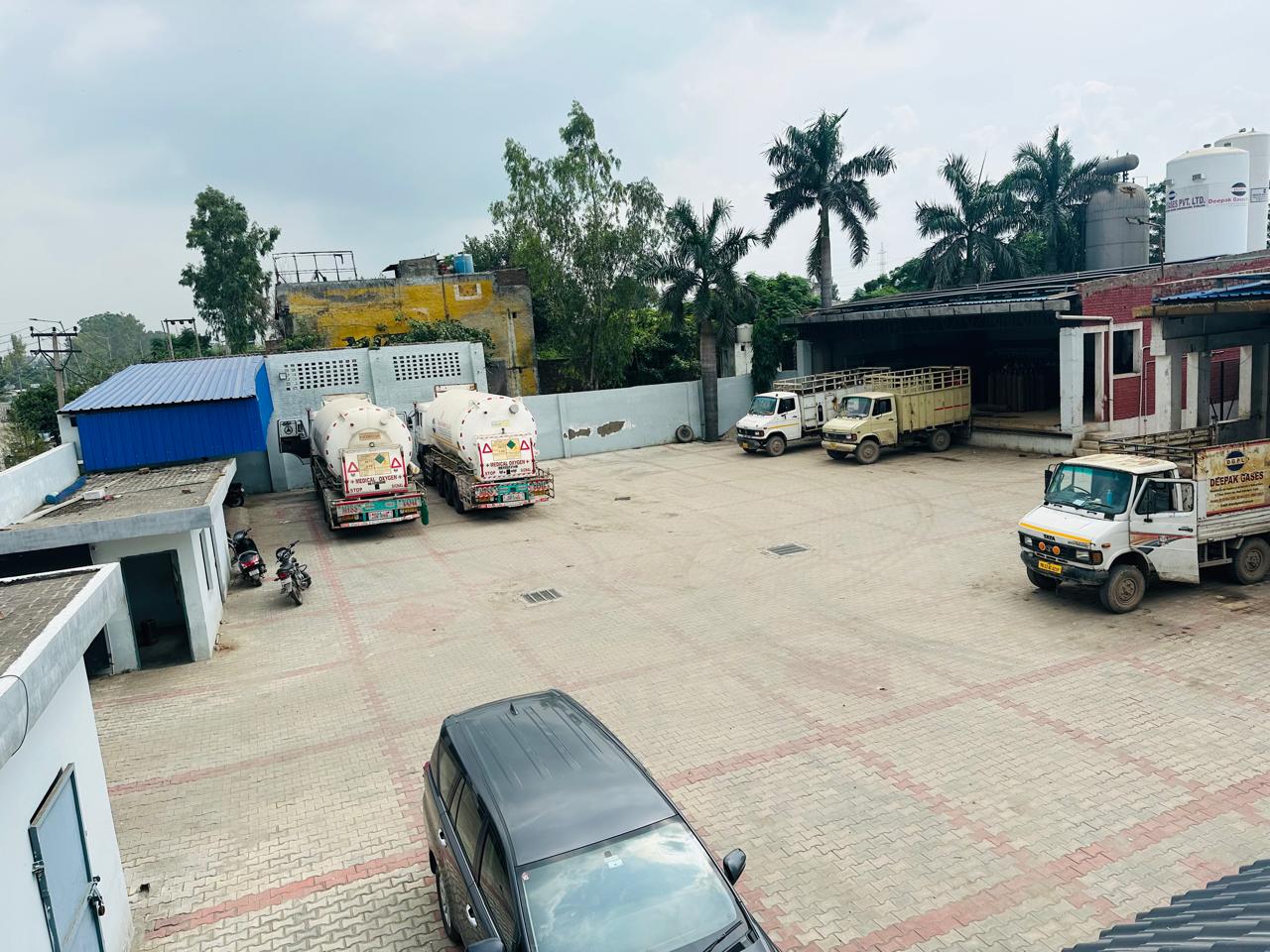
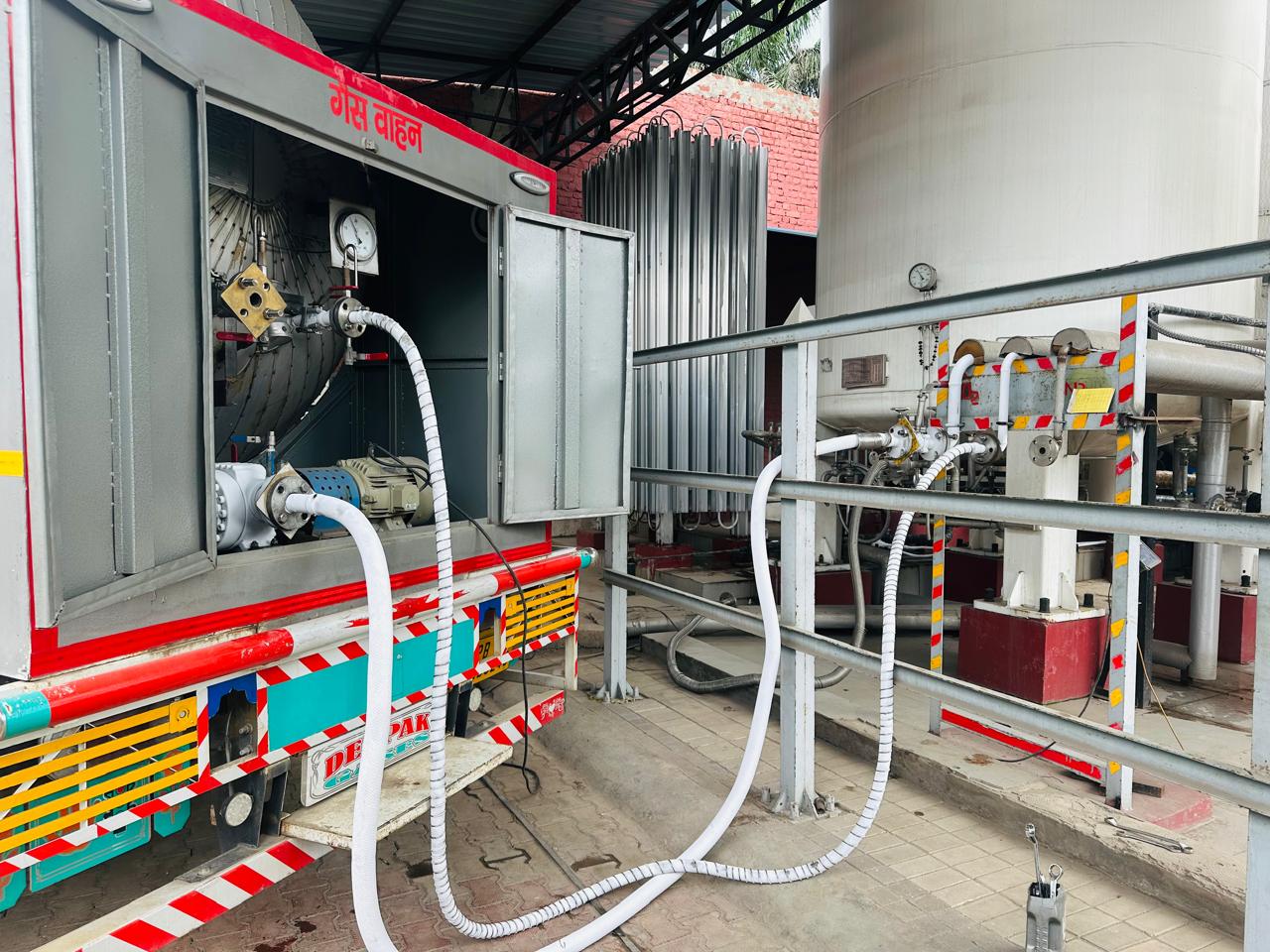
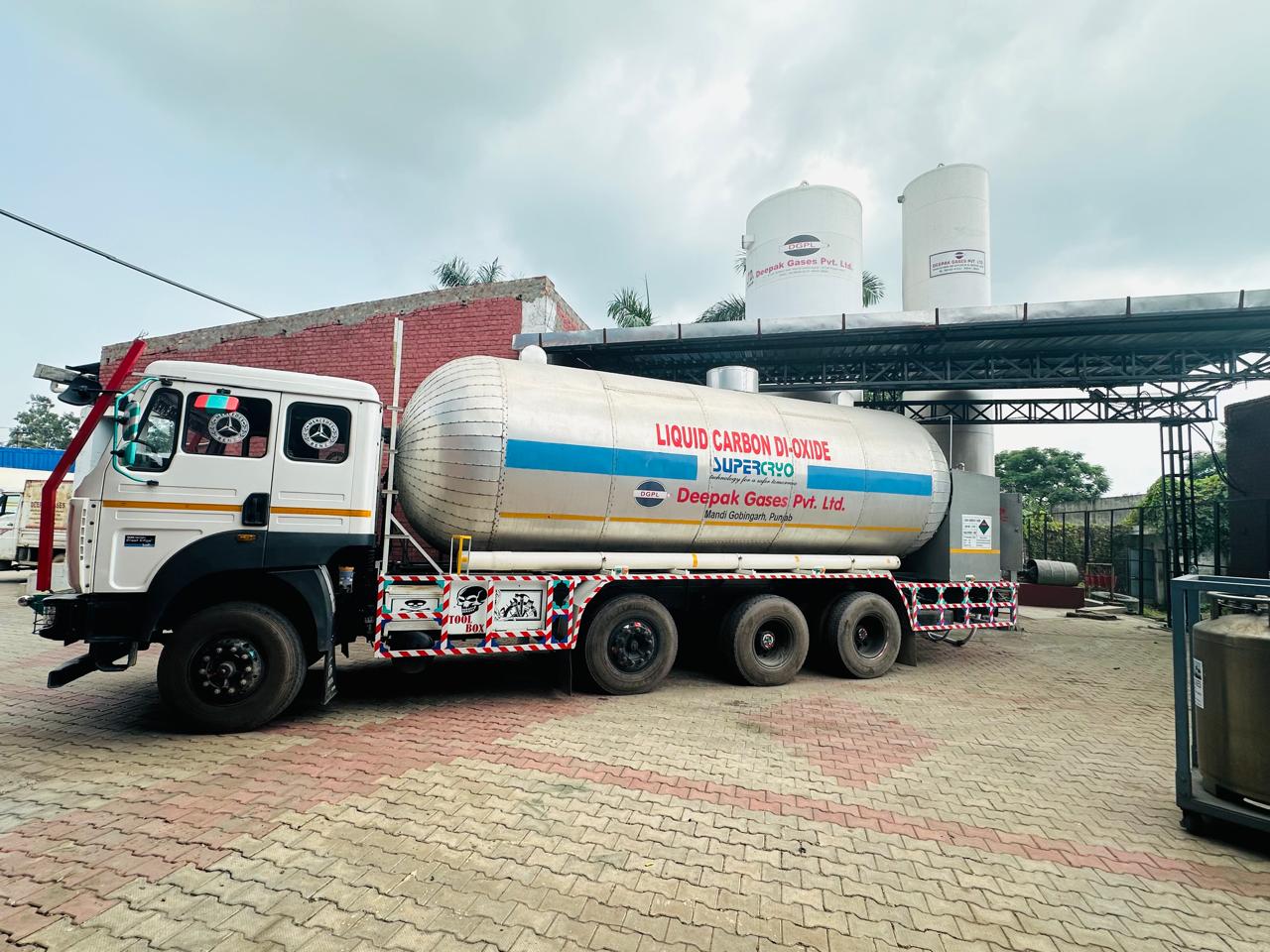
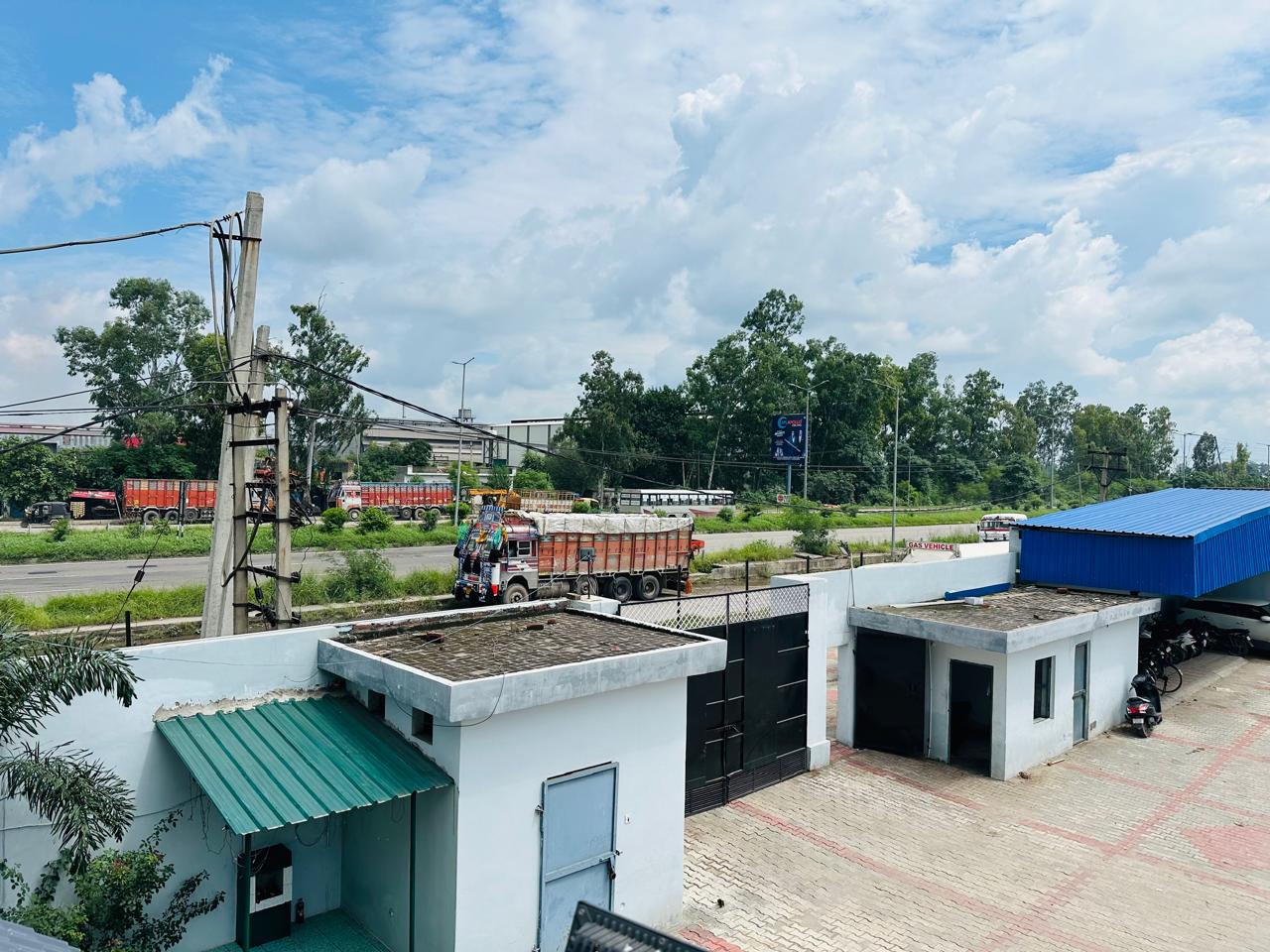
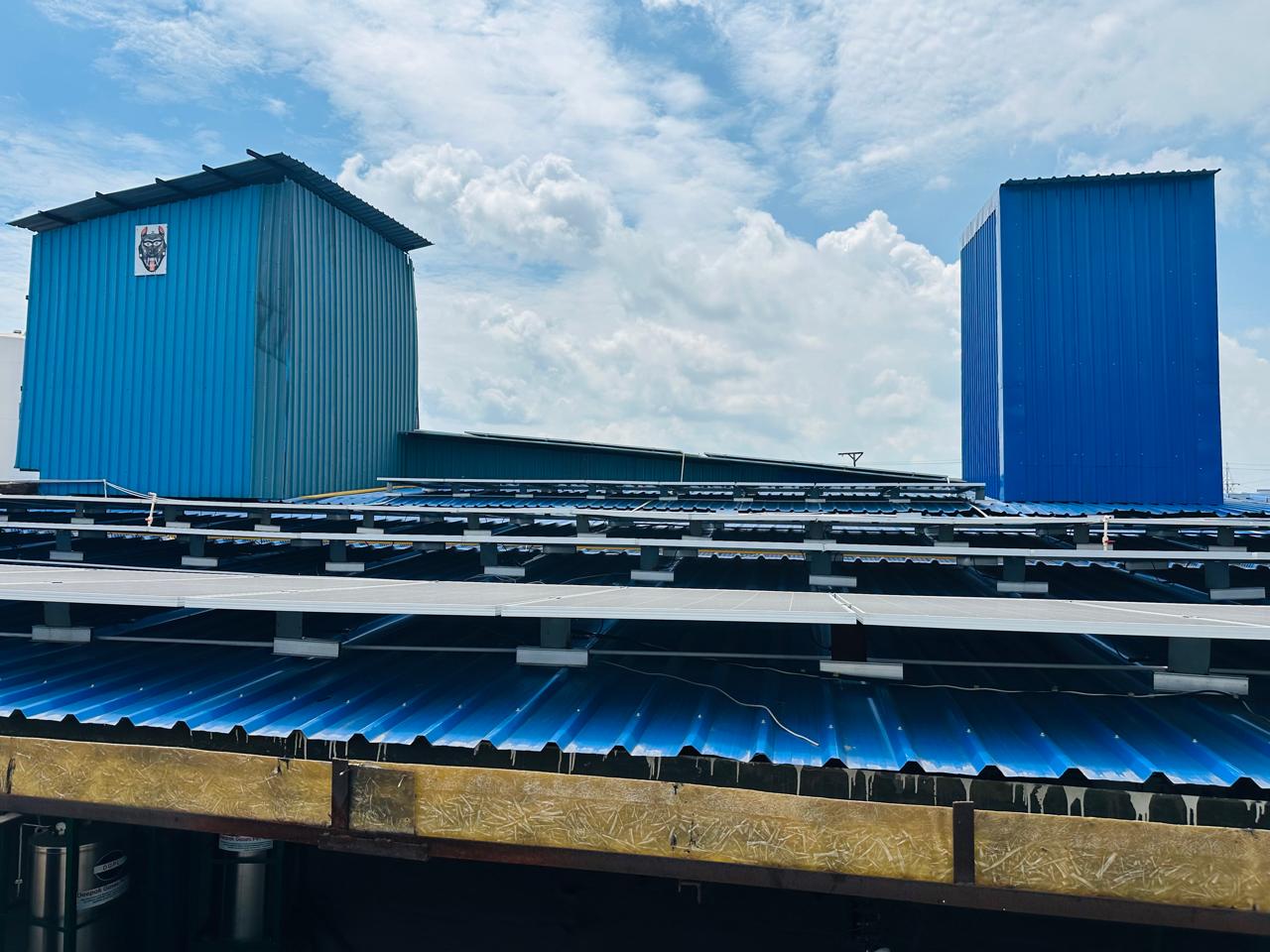
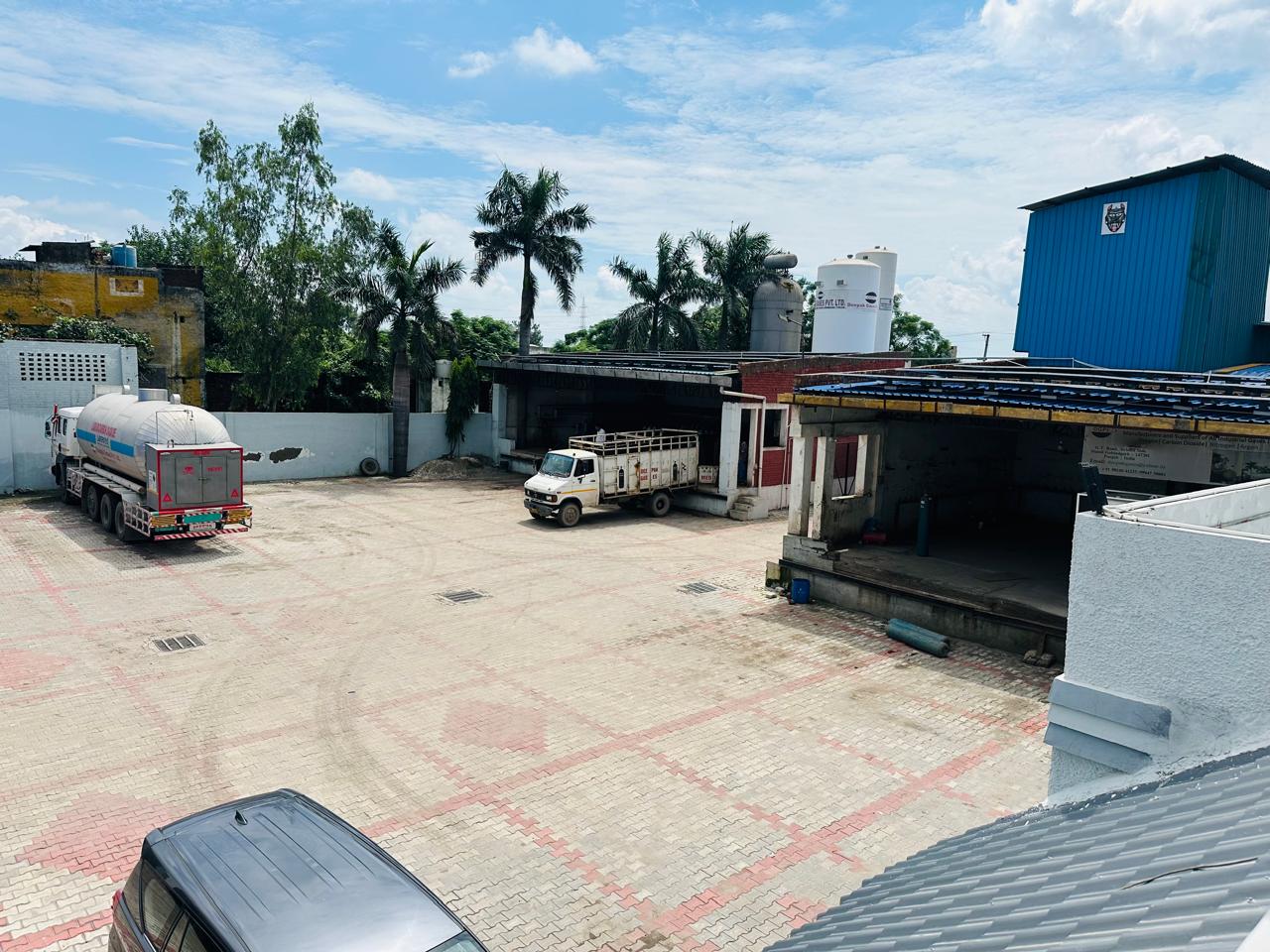
Founded in 1994, Deepak Gases Pvt. Ltd. has grown to become a trusted name in the manufacturing and supply of industrial and medical gases.Based in Mandi Gobindgarh, the Steel City of Punjab, we are strategically located at the core of India’s secondary steel belt.
